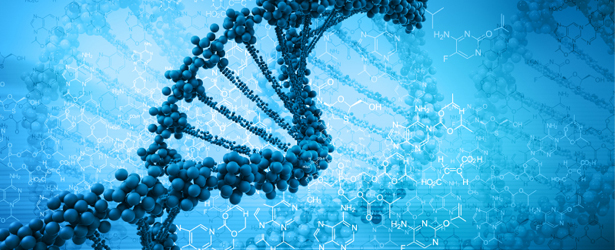
In this installment of Quick Thoughts, we look at hormones and hypertrophy, as well as what the research says about running and arthritis.
Hypertrophy—It’s All in the Muscle?
Post-exercise hormone fluctuations get a lot of play in fitness journals. I imagine that every person reading this can name a program that bases its effectiveness on claims of increased circulating levels of testosterone, growth hormone, and/or an insulin-like growth factor. Researchers have, however, punched all sorts of holes in this line of thinking. Most notably, Phillips* and West showed that of all the hormones measured, only an increase in cortisol levels was associated with growth in Type II muscle fibers (now viewed as the most important for strength and hypertrophy) and an overall increase in muscle mass (1). Cortisol— a catabolic stress hormone. Yet, it was a weak relationship and not very satisfactory.
Rather than looking at hormones that circulate throughout the body, researchers like Phillips (2) are searching for signs of hormones localized to skeletal muscle. One common factor that has popped up in these newer studies involves skeletal muscle androgen receptors. Researchers are finding that changes in the protein content of these receptors are directly associated with hypertrophy. Not only that, but the results have been shown across varying age groups (3). It seems that we may be on to something in figuring out the micro-factors of bigger muscles.
So, why have studies shown temporary increases of circulating hormones to be beneficial? Well, some of it is a case of researchers “looking for what they expect to find.” By investigating only testosterone or human growth hormone, they catch minor fluctuations in these hormones but miss changes in other areas. There’s also another possibility, as Phillips argued in a scientific equivalent of a “letter to the editor.” He commented that a 2011 study on elevated testosterone levels was only worthwhile as an example of “selective reporting (considering only the site of the largest CSA), incomplete statistical analysis (not comparing the changes in CSA between arms), and questionable MR practices” (4).
Now, you might be wondering why pharmaceutical testosterone and its analogues are so good for massive gains. The answer is dosing. Post-exercise hormone fluctuations are minor and fleeting; however, a well-executed cycle of supplemental androgens requires massive doses of the active ingredient applied in such a way as to keep circulating levels consistently high. Of course, if you have taken on a “hormone-boosting” workout that’s been good for you, by all means use it however you deem effective. Just because a program works for a reason other than the one advertised doesn’t mean it should be completely forgotten.
References:
- Phillips SM, et al. (2012). Associations of exercise-induced hormone profiles and gains in strength and hypertrophy in a large cohort after weight training. European Journal of Applied Physiology. Jul;112(7):2693-702
- Phillips SM, et al. (2013). Muscular and Systemic Correlates of Resistance Training-Induced Muscle Hypertrophy. PLoS One. 2013 Oct 9;8(10).
- Ahtiainen, et al. (2010). Heavy resistance exercise training and skeletal muscle androgen receptor expression in younger and older men. Steroids. Jan;76(1-2):183-92.
- Phillips, SM (2012). Strength and hypertrophy with resistance training: chasing a hormonal ghost. European Journal of Applied Physiology. 112:1981–1983.
Arthritis and the Running Man
Contrary to popular opinion, intense running doesn’t really increase your risk of hip and leg arthritis, even if you’re comparing runners to a non-running population. When taking into account the increased impact forces of running, especially when compared to nearly every other common form of exercise, it is easy to assume that this chronic trauma could worsen (or even trigger) the disease. However, as recent research shows, runners may have healthier lower limb joints in spite of the pounding (1).
A collaborative group of Canadian and US researchers decided to figure out why running has this seemingly paradoxical effect (2). They had a hunch that impact duration and frequency was as important as force development. The study involved both runners and walkers, and motion-capture technology and force plates were used to capture biomechanics and load factors as the participants were put through their paces.
Not surprisingly, runners produced more force with each stride. (On average, they produced eight times their bodyweight as compared to the walkers, who produced less than three times their bodyweight). However, walkers’ slower and shorter strides meant that they took more steps and sustained contact with the ground for longer periods of time over a given distance. The net result showed that over the same distance, runners and walkers experienced roughly the same knee forces. The division of those forces was what was different.
You can roughly compare this study’s methods with some common lifting strategies. Imagine taking a moderate bench press load and trying to explosively press it for a given number of reps, with every rep having the bar leave your hands temporarily before being caught. You’re producing a lot of force, but your elbows experience a lighter load when the bar is away from your body. In turn, they’re completely unloaded when the bar is airborne (much like a mid-stride runner having no contact with the ground.) Conversely, if you take that same weight and move it with a very slow concentric and eccentric path for the same number of reps, those brief moments of intense force on the elbows are replaced by a long, lighter application without the loading breaks of a ballistic press.
References:
- Williams, PT (2013). Effects of running and walking on osteoarthritis and hip replacement risk. Medicine and Science in Sports and Exercise. Jul;45(7):1292-7.
- Miller, RH, et al. (2013). Why Don't Most Runners Get Knee Osteoarthritis? A Case for Per-Unit-Distance Loads. Medicine and Science in Sports and Exercise. 2013 Sep 12. [Epub ahead of print]. *This is the same researcher I mentioned in an earlier QT.










